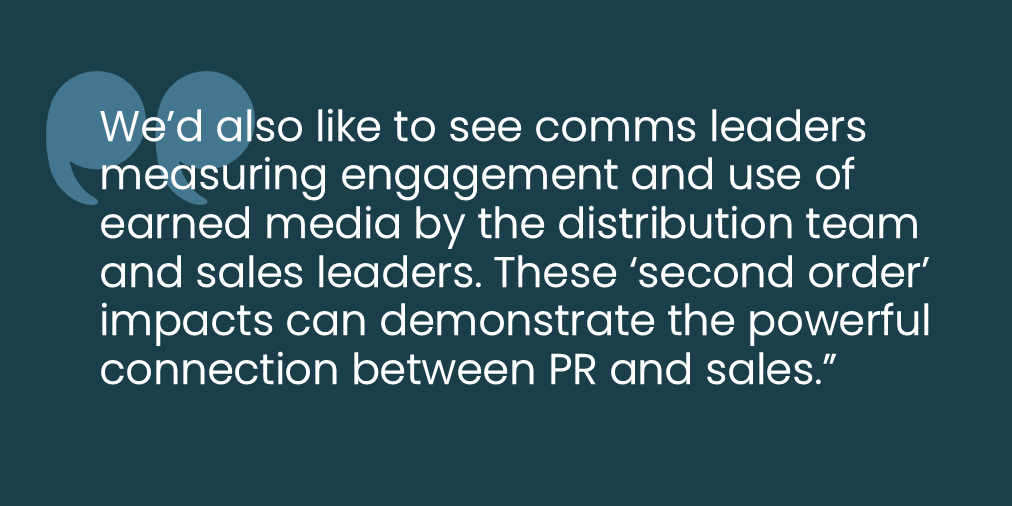
Latest MuckRack survey sheds light on marketing/comms convergence, alignment
What’s everyone else doing?
Of course, the investment industry is unique and, without question, investment marketers and communicators operate in an environment (including regulatory) that other communicators don’t. Even so, it can be interesting to learn how others approach their jobs.
MuckRack recently published the results of a survey on a subject near and dear to our hearts—priority-setting, the collaboration between marketing and communications/public relations professionals (see Financial PR and digital marketing: How they work together), and measurement.
The mostly (84%) U.S. respondents were from brands (41%) and agencies, B2B and B2C, firms of all sizes (three-quarters between 10 and 4,999 employees), and a mix of industries with the greatest concentration (17%) in technology and only 7% from financial services/banking. While 384 responses to the survey were received, MuckRack used just 193. They organzed them into three respondent groups: marketing leaders, PR/communications leaders and marcom leaders, with the latter defined as performing a blend of marketing and communications functions. One-on-one interviews were also conducted with participants.
We encourage you to get the report and recording of a panel discussion featuring Christina Stejskal, VP of Global Comms, Fender; Brian Bell, VP of Comms, Strava; and Aaron Strout, CMO, Real Chemistry, as moderated by Muck Rack Cofounder and CEO Greg Galant. The following are some of our takeaways, illustrated with charts from the survey results.
Isn’t planning for tomorrow a priority today?
In this cross-industry set, the top three priorities of comms and marcom leaders are identical, although to different degrees: Broaden reach and share of voice, build and maintain media relationships, and manage brand reputation.
Why, I wonder, did more marketing leaders prioritize "Report and analyze impact” over brand reputation? Isn’t brand reputation what Marketing is responsible for? Also, I would have hoped for a stronger response to the “React to industry trends” option, but where is “planning” as a priority? That’s what helps marketing leaders anticipate and position for trends. Sorry, MuckRack, but the reported choices don’t cover the full range of what Marketing is charged with. Unless it was offered as a choice and the response was so weak it’s included in the Other bucket?

Source: State of Marketing and PR Leadership, Muck Rack, 2023
Where marketing, comms overlap and diverge
It’s in the next set of data where we see differences between the three types of professionals, which is to be expected.
Let’s start with the marketing responses. Am I wrong to be disappointed 1. That there isn’t more of a pronounced difference between the responses from marketing leaders (who are in more strategic positions) and marcom leaders? 2. That there is so much focus on what’s happening today (lead generation, sales, web traffic, conversation rate, social media engagement!) and so little long-term perspective reflected?
I would expect CMOs to be more focused on what strengthens a business over time—brand share of voice, yes, but also revenue impact, customer retention, customer lifetime value, etc.
Notice the absence of any mention of the one channel that continues to be so important to marketing investment firms—email! Email opens and clicks don’t warrant mention as a top marketing metric, but I wouldn’t have been surprised to see, considering the other tasks appearing here. And, email engagement is a leading indicator for those who use response as a signal shared with Sales in the CRM. Certainly more so than social media engagement.
Email was touched on in the webinar, with the panelists suggesting that texting, including to reporters, is largely replacing email. Only Stout, representing marketers, spoke on email’s continued value.
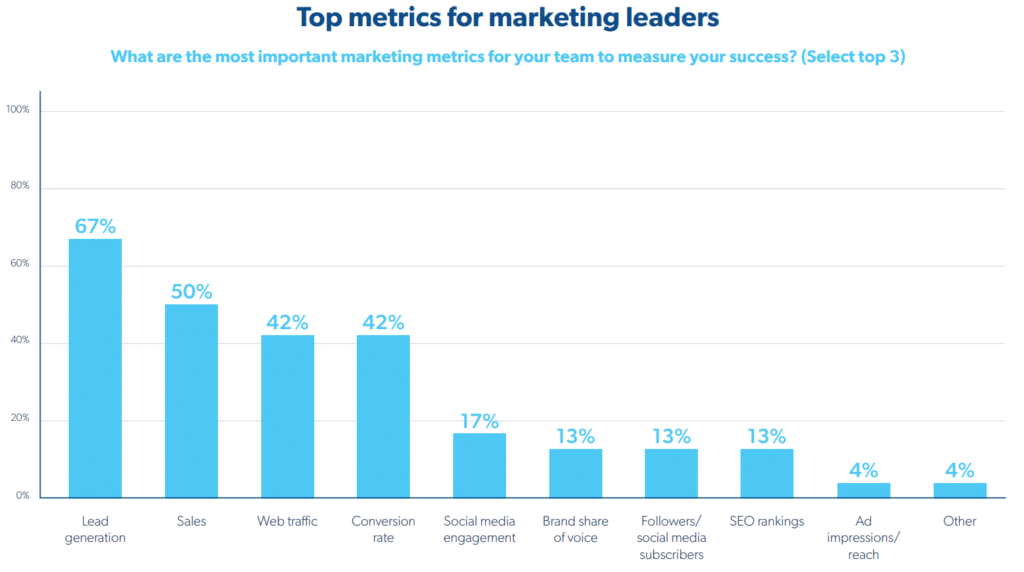
Source: State of Marketing and PR Leadership, Muck Rack, 2023
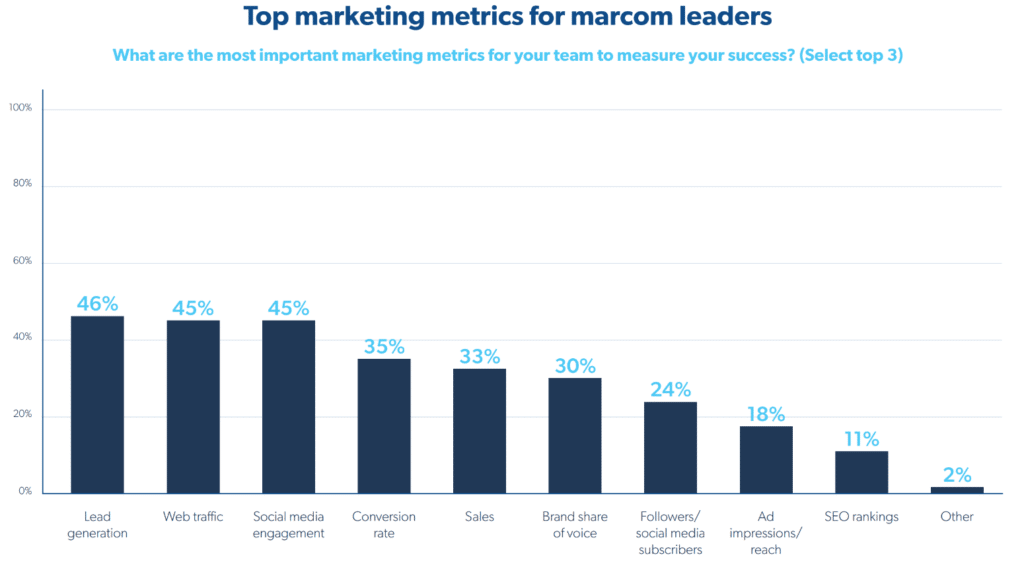
Source: State of Marketing and PR Leadership, Muck Rack, 2023
Search performance: important to all
There are few surprises in the top metrics cited by PR/communications leaders, although interesting to see that one-quarter of these pros does consider revenue impact.
A hint of the converging interests of marketing and PR surfaced in the webinar. The most impassioned comments about search engine optimization (SEO) came not from a marketing leader but from the comms leader Stejskal. Stejskal twice mentioned her team’s attention to search terms in earned media and their impact in driving website traffic.
“As earned leaders, we’re putting out press releases, we’re landing these stories, and SEO is relying on that type of content so the more we’re getting out, everything is interconnecting,” said Stejskal.
“I tell my team, ‘I swear there is a reason to my madness because it’s all going to link back. It will link back to brand credibility and trust.’”
Herself a PR leader, my colleague Jody Lowe agrees, calling search performance “one of the least measured impacts of earned media.”
“In the investment industry, we’d also like to see comms leaders measuring engagement and use of earned media by the distribution team and sales leaders. These ‘second order’ impacts can demonstrate the powerful connection between PR and Sales.”
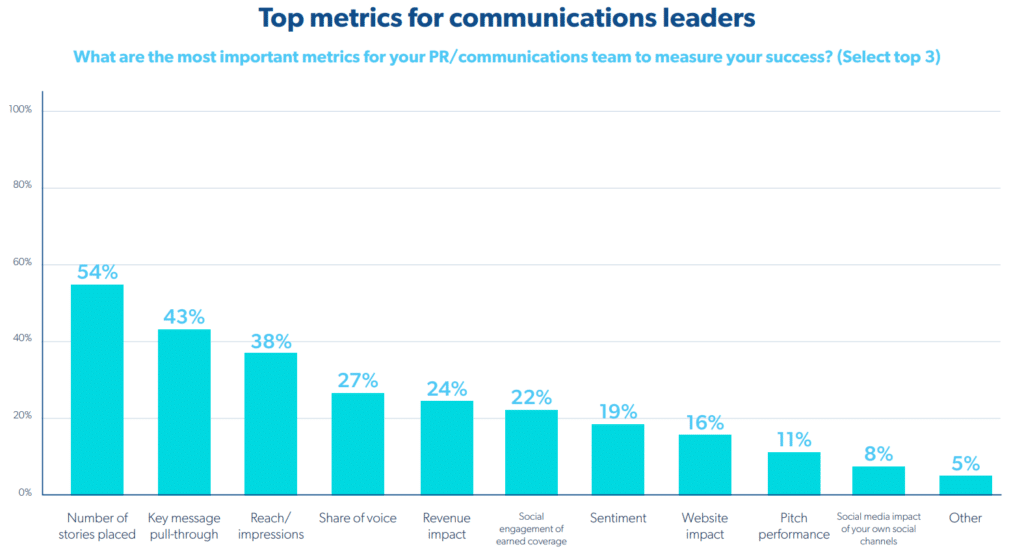
Source: State of Marketing and PR Leadership, Muck Rack, 2023
Marketing/comms alignment
Because of the obvious and growing overlap in marketing and PR work and success measures, I was particularly interested in what the survey had to show about alignment between marketing and PR/communications teams. In fact, almost two-thirds (64%) of the respondents said they meet weekly and 17% said monthly. Just 11% said they never meet. Another question, however, showed that alignment is a work in progress.
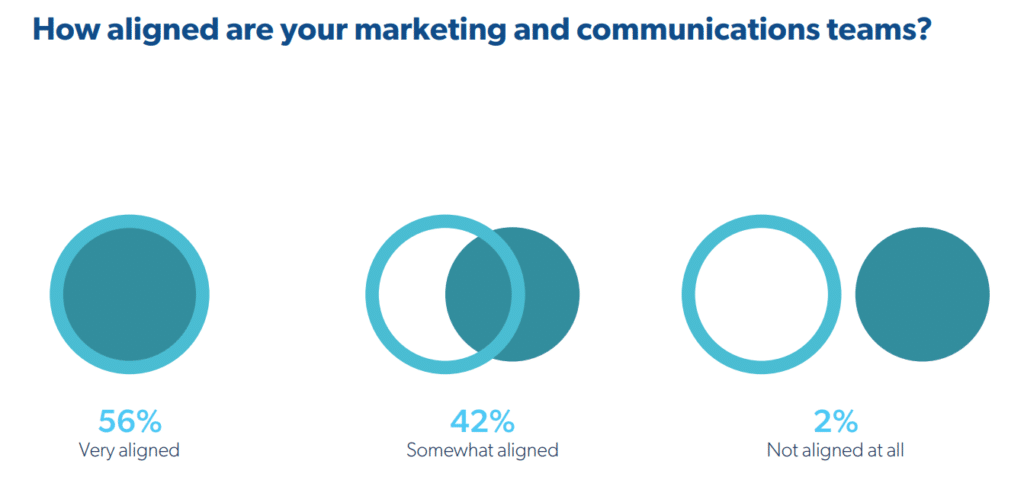
Source: State of Marketing and PR Leadership, Muck Rack, 2023
Alignment shows itself in a few ways.
“I try to be accretive to the [communications] team,” said Strout. “I have the advertising budget, we know paid and editorial need to stay separate but we try to partner with [key] pubs—strategic things like putting sponsorship dollars against or investing in panels or hosting our own panels and inviting media.” Awareness of publications that PR is pitching to can strengthen relationships, he said.
There’s no excuse for comms not to be informed and aligned, argued Bell.
“You [marketers] should loop us in…” he said. “I just think it’s inexcusable to not have a space at the table because we bring a unique perspective based on news cycles, based on a lot of information that you might not be looking at that could make or break the success of a campaign, that could make or break your reputation, that deal with the crises of a campaign that doesn’t go well. I just don’t think comms should be excluded.”
How tight are your Marketing and PR/comms functions? Is it a priority for you to fully leverage the opportunities each group surfaces for the other, and for the greater good? Want to learn more? Send us an email and let’s talk.
Subscribe.
Receive the latest news and insights from Lowe Group.